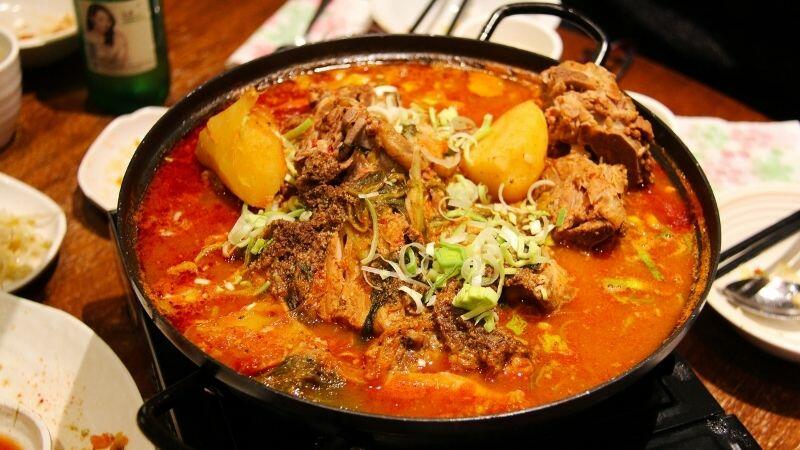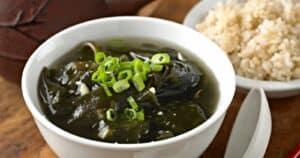Have you ever bitten into a mouthful of kimchi or gochujang and felt your taste buds explode from the intense heat? You’re not alone. Korean cuisine is renowned worldwide for its bold and spicy flavors. But have you ever wondered why Korean food is so gosh darn spicy?
In this article, we’ll explore the origins of
A Deep Love of Chili Peppers
Korea’s obsession with
By the 17th century, chili peppers had become a pillar of Korean cooking. Korea’s long and hot summers were the perfect climate for chili peppers to thrive. Both fresh and dried chilies were used with abandon in Korean kitchens.
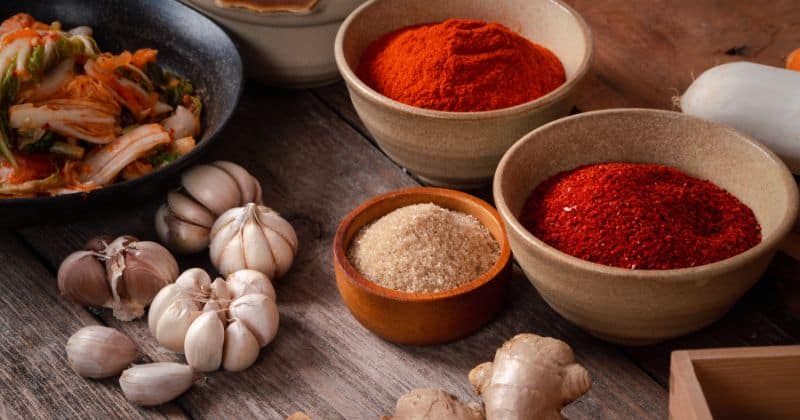
The most common chili used in Korean cuisine is the red pepper known as “gochugaru.” Gochugaru has a vibrant red color and a flavor that’s sweet yet spicy. It forms the base for many quintessential Korean condiments, including:
- Gochujang: A savory and sweet fermented chili paste used in everything from bibimbap to soups.
- Gochu garu: Flakes made from ground, dried chilies. Sprinkled on dishes for extra heat.
- Gochujang: Chili-infused soybean paste with a rich, umami flavor. Used to season everything from jeon pancakes to meat dishes.
So the Korean obsession with chili peppers is deeply rooted in history and tradition. But chili peppers aren’t the only ingredient that makes Korean food pop.
Unique Cooking Methods Intensify Flavors
Beyond chili peppers, Korean cooking techniques also amplify
Fermentation
Koreans use fermentation to preserve and intensify tastes. Many Korean chili pastes, soy sauces, and kimchis are fermented, which gives them tangy, complex flavors.
As ingredients ferment, their flavors become more robust. The spices infuse deeply into the food. This makes traditionally fermented Korean dishes like kimchi jjigae or doenjang jjigae pack serious flavor punches.
High-Heat Cooking
Meat or vegetable dishes cooked on a grill or in a searing hot pan get a blast of flavor from the high heat. When food is cooked quickly over high heat, the outside gets caramelized and crispy. The inside stays juicy and tender.
This high-heat cooking style adds texture and gives a nice char. It also means any spices slapped on meats or veggies will stick and get even tastier. Think bulgogi, dak galbi, or spicy pork belly (samgyeopsal). Grilling already brings out the flavor – then add on some gochujang or gochugaru and you’ve got seriously tasty
So Korean cooking methods make spices and flavors pop. But cuisine isn’t just about ingredients and recipes. Culture and tradition play huge roles in shaping a cuisine.
The Cultural Role of Spice
To understand why
Fire Food is Healthy Food
According to Eastern medicine, foods have innate thermal natures – either “hot” or “cold.” Spicy chili peppers are believed to be “heaty,” energizing foods. So Koreans traditionally ate spicy foods during the hot summer months to restore balance and vitality.
In addition, spicy Korean soups and stews were thought to be excellent cold remedies during frigid Korean winters. So
Sharing Spice Builds Bonds
Sharing meals is important in Korean culture for bonding with others. In particular, Koreans believe eating spicy foods together increases friendship and closeness.
The collective sweat and thrill from a mouth-searing dish like toppoki or kkanpunggi builds trust. So don’t be shy about digging into that communal plate of kimchi jjigae – it’s bringing you closer together!
Spice = Joyful Eating
Finally, Koreans simply see spicy food as joyful eating. The exhilaration and tingle of chili peppers is just plain fun! For Koreans, a meal lacking
So
How Spicy are Different Korean Dishes?
Think all Korean food is blow-your-head-off spicy? Think again.
Mild Korean Dishes

Want to ease your way into Korean cuisine? Start with these mellower dishes:
- Bibimbap: A bowl of rice, vegetables, beef, and a fried egg. Add gochujang to taste.
- Bulgogi: Thin slices of sweet and savory grilled marinated beef.
- Japchae: Sweet potato noodles stir fried with veggies and beef.
- Mandu: Korean dumplings filled with pork and kimchi.
- Hotteok: Sweet and savory griddle cakes with a brown sugar filling.
Moderate Spice
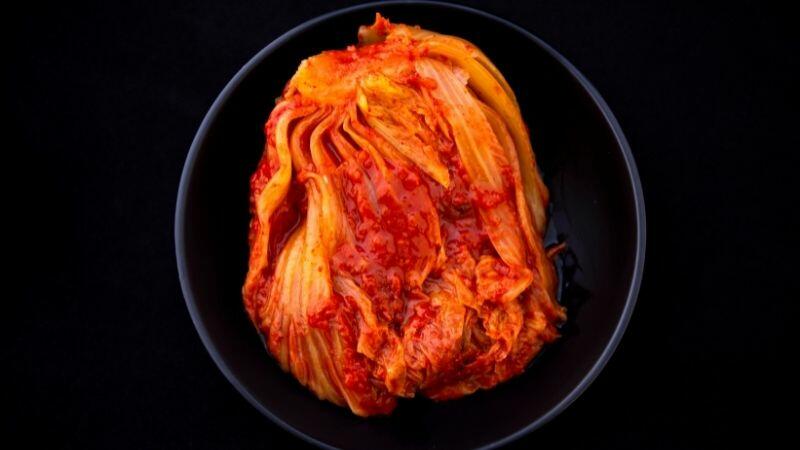
Ready to turn up the heat just a notch? Try these:
- Tteokbokki: Chewy rice cakes simmered in a spicy red chili sauce.
- Kimchi Jjigae: A stew made with kimchi, pork, and tofu.
- Samgyeopsal: Thick slices of pork belly grilled at the table. Often served with spicy ssamjang dipping sauce.
- Dak galbi: Spicy chicken stir fry with cabbage, sweet potatoes, and rice cakes.
- Budae jjigae: “Army stew” with kimchi, spam, sausages, baked beans, and gochujang.
Very Spicy
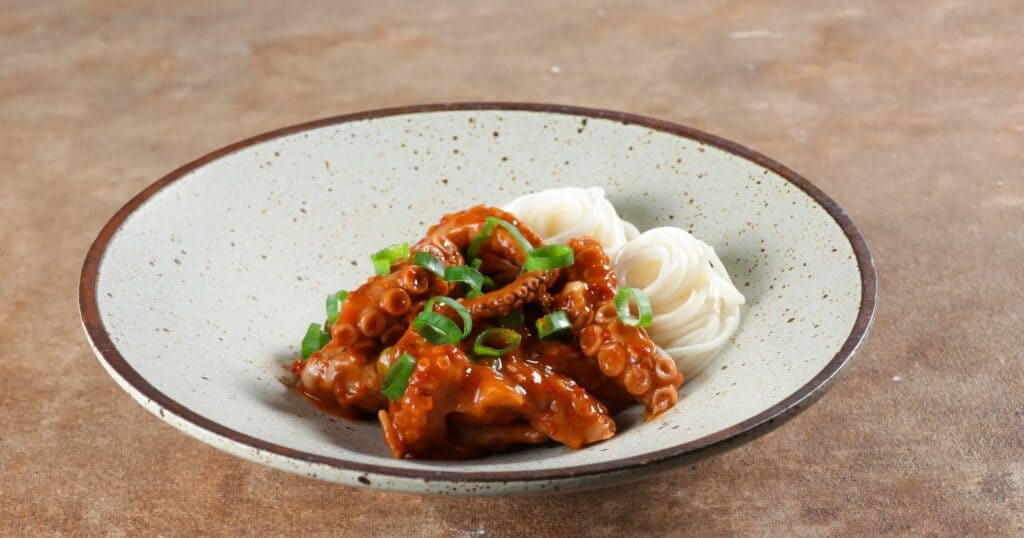
If you’re a true chili-head, bring on the heat with these scorchers:
- Gochujang jjigae: A red-hot, aggressively spicy stew made with gochujang chili paste.
- Ddeokbokki: Rice cakes smothered in a lip-numbing pool of bright red gochujang sauce.
- Nakji bokkeum: Fiery stir-fried baby octopus swishing around in chili flakes and pepper paste.
- Gochu garu jeon: Pancakes with handfuls of dried chili pepper flakes for face-melting heat.
- Laengpo gogi: Beef short ribs marinated in a sauce of puréed chili peppers for next-level spiciness.
Tips for Handling the Heat
Korean cuisine offers amazing diversity – not every dish will scorch your mouth. But you’re bound to encounter some finger-tingling, nostril-clearing
- Go slow at first: Try just a small spoonful of any ultra-spicy stew or sauce instead of diving in headfirst. You can always add more!
- Have dairy on hand: A cold glass of milk or bite of ice cream can instantly soothe your fiery mouth.
- Skip raw onion garnish: Those spicy onion slices on top triple the tang. Pick them off if it’s too much.
- Grab some Bibimbap: Mixing mild rice and veggies into a dish like dolsot bibimbap balances out serious
spice . - Enjoy some Banchan: Cool, crunchy banchan (side dishes) like radish kimchi, cucumbers, and bean sprouts refresh the palate after spicy mains.
- Stay hydrated: Keep water on hand to quench your thirst and tame
spice levels. Or go for something milky like Korean iced tea.
Potential Health Benefits of Spicy Korean Cuisine
Medical research on spicy foods is still ongoing. But preliminary studies point to some perks from piquant flavors:
- Red chili peppers may boost metabolism slightly and help burn extra calories.
- Capsaicin, the compound that gives chili peppers their kick, has anti-inflammatory effects. It may help reduce chronic inflammation.
- Gochugaru and other red chili peppers are high in antioxidants like beta carotene and vitamin C. They may help strengthen immunity.
- Chili peppers stimulate digestion by promoting saliva, enzyme, and stomach acid production. So spicy Korean foods can ease tummy troubles.
- The spices in Korean cuisine may protect cells against carcinogens. But more research on cancer-fighting benefits is needed.
Of course, everyone has different
Crank Up Your Taste for Korean Cuisine
From kimchi to gochujang,
Learning to love Korean
With this guide under your (figurative) belt, you’re ready to conquer the mouth-burning joys of Korea’s fiery food! Now pull up a seat and let’s get eating. Be adventurous with those chili peppers – your newfound passion for piquant flavors awaits.

